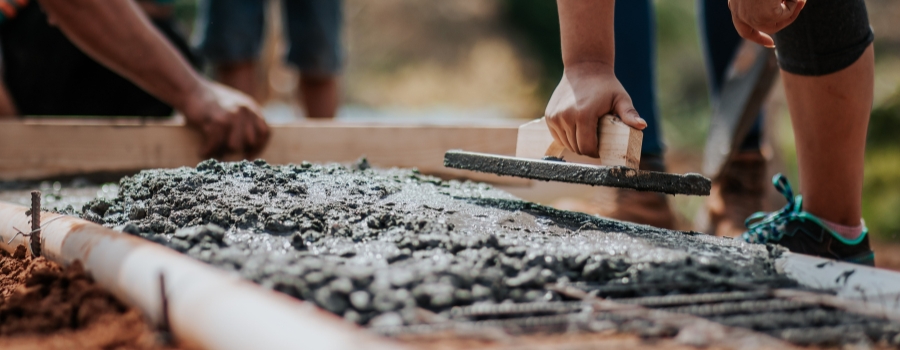Blog Post

Understanding the Different Grades of Concrete: Which One Is Right for You?
Concrete is essential in construction, forming the backbone of countless projects. However, understanding the different grades of concrete is crucial in ensuring that your project meets the necessary standards of strength, durability, and longevity. As a leading concrete supplier, we recognize that selecting the right grade is a pivotal decision, whether you're using ready-mix concrete or onsite mix concrete. Below, we delve into the various grades of concrete, highlighting their specific uses and benefits.
What Are Concrete Grades?
Concrete grades are classified based on their compressive strength, measured in megapascals (MPa) after 28 days of curing. The grade of concrete indicates the strength and composition of the concrete mix, directly influencing its durability and suitability for different construction purposes. The grade is denoted by an 'M' followed by a number, such as M20 or M25, where 'M' stands for "Mix" and the number represents the compressive strength.
M5 and M7.5: Low-Strength Concrete for Simple Foundations
Starting at the lower end of the spectrum, M5 and M7.5 grades are typically used for non-structural purposes such as simple foundations or non-load-bearing walls. These grades are often used in the initial stages of construction where the load-bearing capacity is minimal. They are mixed with a higher proportion of sand and aggregates compared to cement, making them economical but not suitable for projects that require significant strength.
M10 and M15: Suitable for Plain Concrete Works
M10 and M15 grades offer slightly higher compressive strengths, making them ideal for plain concrete works like pavements, pathways, and footings. These grades are also commonly used for levelling and bedding in construction. Ready-mix concrete in these grades is a popular choice for minor, low-stress applications due to its ease of use and cost-effectiveness.
M20: The Standard Grade for Residential Construction
M20 grade concrete is one of the most commonly used grades in the construction industry, particularly for residential buildings. This grade offers a compressive strength of 20 MPa, making it suitable for slabs, beams, columns, and footings in single to double-storey buildings. Its versatility makes it a preferred choice for onsite mix concrete, where control over the mix can be tailored to specific project needs.
M25: Ideal for Reinforced Concrete Structures
When the construction demands higher strength, M25 grade concrete comes into play. This grade is widely used for reinforced concrete structures such as beams, columns, and slabs in commercial buildings. With a compressive strength of 25 MPa, M25 is suitable for areas subjected to moderate stress, ensuring durability and reliability in various structural elements. Ready-mix concrete in M25 grade is often employed in projects where consistency and quality control are paramount.
M30 to M35: High-Strength Concrete for Heavy Loads
M30 and M35 grades are high-strength concretes used in construction projects requiring significant load-bearing capacity. These grades are commonly used in the construction of bridges, heavy-duty industrial floors, and foundations for high-rise buildings. The higher cement content in these mixes ensures that the concrete can withstand substantial forces, making it ideal for both onsite mix concrete and ready-mix concrete depending on the project's requirements.
M40 and Above: Ultra-High-Strength Concrete for Specialized Applications
For projects demanding the highest levels of strength and durability, M40 and above grades are employed. These ultra-high-strength concretes are typically used in prestressed concrete structures, high-rise buildings, and infrastructure projects like tunnels and dams. The mix design for these grades is intricate, requiring precise control over the ingredients to achieve the desired properties. The use of ready-mix concrete is particularly beneficial here, as it ensures the exact proportions are met consistently, which is critical for such high-performance applications.
Choosing Between Ready-Mix Concrete and Onsite Mix Concrete
Selecting the right type of concrete—ready-mix or onsite mix—is as important as choosing the appropriate grade. Both have their advantages and specific use cases depending on the project's scope and logistical considerations.
Ready-Mix Concrete: Precision and Convenience
Ready-mix concrete is manufactured in a controlled environment, ensuring that the mix design meets exact specifications. This type of concrete is ideal for large projects where consistency, quality, and speed are crucial. By opting for ready-mix, you minimize onsite labor, reduce material wastage, and ensure a uniform mix, which is particularly important for high-strength grades like M30 and above. Moreover, the convenience of having the concrete delivered directly to your site can significantly streamline your construction process.
Onsite Mix Concrete: Flexibility and Control
Onsite mix concrete, on the other hand, offers flexibility, allowing adjustments to be made to the mix as required during the construction process. This option is beneficial for smaller projects or when the site conditions demand a specific mix design that can be fine-tuned onsite. While it may require more labor and management, onsite mixing provides the advantage of immediate adjustments, making it ideal for projects with unique or changing requirements.
Factors to Consider When Choosing the Right Concrete Grade
Selecting the appropriate concrete grade for your project involves considering several key factors:
Conclusion: Making the Right decision for Your Construction Needs
Selecting the correct grade of concrete is essential for the success and durability of any construction project. Whether you choose ready-mix concrete for its convenience and precision or onsite mix concrete for its flexibility, understanding the different grades and their applications will guide you in making an informed decision. As your trusted concrete supplier, we are here to provide expert advice and high-quality materials to ensure your project is built to last.